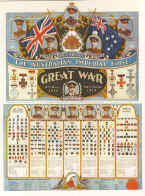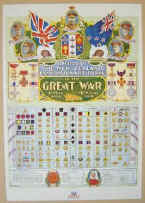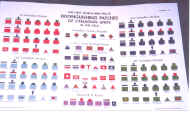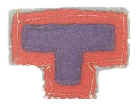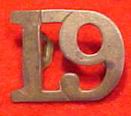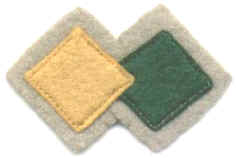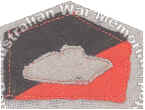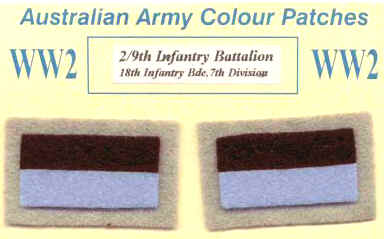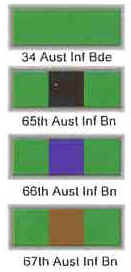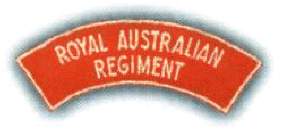 |
|
|||
|
|
||||
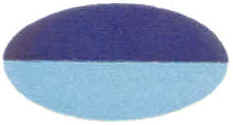
42nd Battalion |
Colour (shoulder) patches of the First AIF and the |

6 Field Artillery |
|
| There is a popular misconception the the colour patch system was somehow unique to the AIF. Not so. The New Zealand Expeditionary Force (NZEF) and the Canadian Expeditionary Force (CEF) both had a similar system. | ||
| AIF | NZEF | CEF |
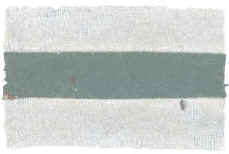 |
|
WW1 Colour Patch - 3rd Bn Australian Naval & Military Expeditionary Force (ANMEF)
|
 |
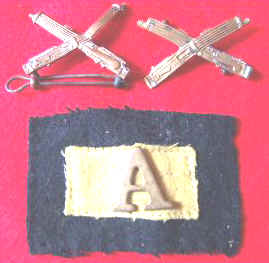
|
Colour patches were
developed and used by the Australian Imperial Force (A.I.F.) in World
War 1, as a means of rapid unit identification. In the absence of
regimental badges, they became a focal point of fierce unit loyalty and
pride.
<<< Shoulder or colour patch of 1st Machine Gun Battalion with the Anzac "A" and the metal crossed Vickers badges that indicated special training. |
||||
|
This colour patch system was continued throughout the Australian Army between 1921 and 1945, but ceased during the early years of the post-World War 2 army. During World War 2, Australian Imperial Force unit colour patches were distinguished from those of the first AIF by the addition of a gray border or backing. This border, or backing, was of a shape representing the division to which the battalion was allotted, and not necessarily symmetrical with the battalion shape, for example 2/19th Australian Infantry Battalion's colour patch was a half-sized battalion patch diamond-shaped brown over mid-green, within the gray horizontal oval of the 8th Australian Division.
Colour patches were re-introduced in 1987 on a restricted scale, permitting active units which could prove descent from a former unit which had an approved colour patch and served either during World War 1 or World War 11, to apply to wear the earliest version of that unit's colour patch. Policy in the case of linked units is to wear the colour patch of the unit taking precedence in the linked unit's designation.
Infantry colour patches, with the exception of the 9th Australian Division, are divided equally in the horizontal or vertical plane. In the former case, the battalion colour is placed above the brigade colour. In the latter, that portion of the colour patch nearer the front of the wearer is the battalion colour, that to the rear the brigade colour. The shape of the colour patch, with the exception of the battalions of 4th Brigade, indicates the division to which the unit belonged in the Great War. The 4th Brigade, though wearing the 1st Division shape patch, was allotted initially to the New Zealand and Australian Division for service at Gallipoli. It was, after Gallipoli, allotted to 4th Division on its being raised in Egypt in February 1916. |
|||||
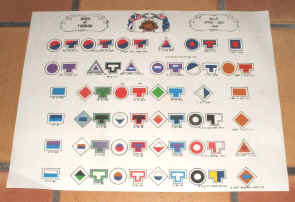 |
|
| For the Infantry and the corps that
supported it directly the basic Unit was a Division. This was broken
into Brigades, they into Battalions.
Each Division was allotted a shape. Each Brigade is allotted a colour that is the senior (LOWER) colour of the patch. Each Battalion is allotted a colour that is the junior (UPPER) colour of the patch. Those colours remain the same in each brigade. If we take the 3rd Division as an example the break-up is like this.
|
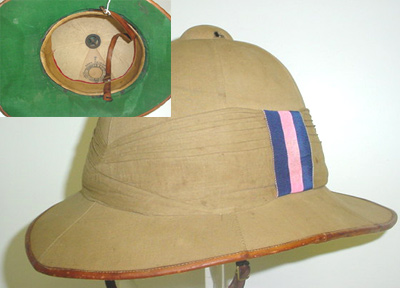 |
World
War 1
It is thought that the Australian, NZ and Canadian Armies system's of colour patches may have been inspired during the South African (Boer) War (1899-1902) where some British Army units wore small cloth patches in colours or tartans, appropriate to their regiments, on the puggarees of their pith helmets. <<< Was this where our colour patch system started? |
|
In late 1914 an AIF Order provided small flags, nine inches square (23 cm), to be used to mark headquarters and unit lines. These different coloured flags, with some minor changes, were to become the basis of the 1st Division's colour patches.
A 1st Division Order issued in Egypt in March 1915 stated: 'In order to
better distinguish the several units of the Division, coloured patches
of cloth will be worn on the sleeve one inch below the shoulder seam.
Except in cases of Headquarters of Brigades and the Divisional
Artillery, the Engineers and Army Medical Corps, badges will consist of
two colours, the lower indicating the formation, the upper the unit etc.
Light Horse (4th Light Horse) and Artillery will be divided diagonally,
the others horizontally'. |
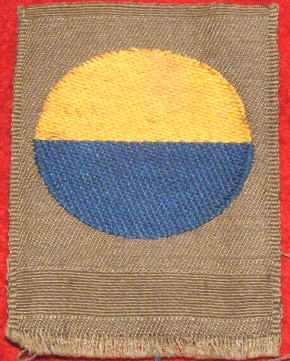 |
|
|
Left & right handed colour patches |
|
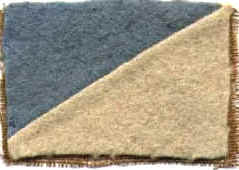
|
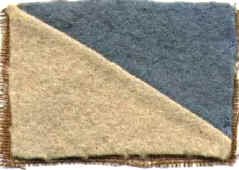
|
The
tradition has always been to portray the right hand patch in
illustrations where only a single patch is shown.
The problem of 'handedness' in AIF colour patches must have arisen early
in the First World War. While the issues did not concern the First,
Second, Third or Fourth Infantry Divisions at all, and while the Fifth
and the (stillborn) Sixth Infantry Divisions needed only to turn one
patch upside down to produce a matching pair, other units, most
significantly Artillery and Light Horse, required further consideration.
In the case of Light Horse Regiments, the leading and lower colour on any shoulder should be the Brigade Colour (i.e. white for 1 ALH Brigade). In order for the brigade colour to lead on both sleeves, the two patches must be mirror images of each other.
Thus it will be seen that any patch in which the colours are separated
by a line which deviates from the horizontal will present an issue of
'handedness'. In the case of a vertical division, the problem can be
easily solved by turning one patch upside down, but a diagonal division
must require the production of two entirely separate colour patches.
Appendix 4 of 'To Benghazi', the first volume of the Second World War
Official History, contains some interesting notes on the problems which
were experienced in this context during that conflict. |
|
 |
Colour patches (Shoulder Patches) of the Second AIF |
|
The Second AIF used the
same colour patches as the First AIF with the difference that the patch
was mounted on an oval of gray or beige felt to distinguish it. Some
examples are shown below...
|
|
|
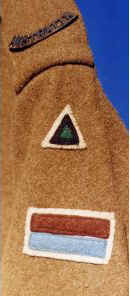 |
|
|
Above. 2/20 Battalion
Below. 2/30 Battalion |
||
|
|
| The units that served at Tobruk during the siege were allowed to change the shape of their colour patches to the capital "T" as shown in this illustration of the patch of the 2/32nd Battalion >>> |
|
| New units such as the tank units came up with different patches as seen here in the patch of the 2/7th Armoured Regiment >>>> |
|
|
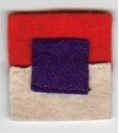 |
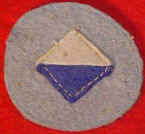 |
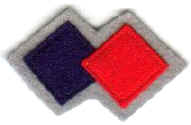 |
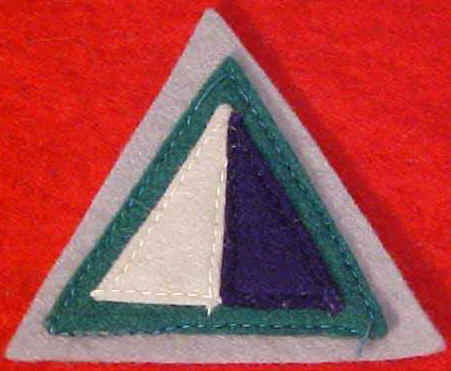 |
| New Guinea Force Engineers | 2/28 Bn AIF | 2/7 Cavalry Cdo | Corps Troops II Corps |
WW2.
At the outbreak of World War II, and with the raising of the 2nd AIF, it
appears that many newly raised units may have initially been authorised
to adopt the patches of their numerical forebears of the Great War but
some units just went ahead and did so without authority.
As the War continued new shapes came into being; for example, the T-shaped patches of units within the 9th Division in 1943 (which commemorated the major part played by the Division in the siege of Tobruk). By the end of 1944 some 800 colour patches had been introduced into the Army during the War.
Post WW2
Units which could trace their lineage back to either World War I or World War II were granted permission to adopt the appropriate patch (some claims are, however, somewhat shaky). These patches came to be referred to as the 'Series I' colour patch system, as it was then decided to put patches on every unit and organisation within the Army. In 1996 the 'Series II' patches came into service; these were largely based on corps, and in some cases unit, colours. The colour patches are no longer worn on both shoulders, as was the case in the past, but are now positioned on the right-hand side of the puggaree on the 'Slouch' Hat.
|
